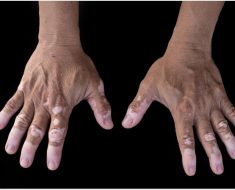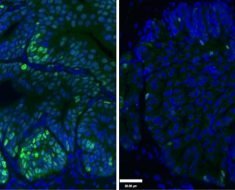
Researchers at Karolinska Institutet in Sweden have developed a new method for identifying compounds that prevent aging. The method is based on a new way of determining age in cultured human cells and is reported in a study in the journal Cell Reports. Using the method, the researchers found a group of candidate substances that they predict to rejuvenate human cells, and that extend the lifespan and improve the health of the model organism C. elegans.
Aging is an inevitable process for all living organisms, characterised by their progressive functional decline at the molecular, cellular, and organismal level. This makes aging a key determinant for human lifespan and a major risk factor for many so-called age-related diseases such as Alzheimer’s disease, diabetes, cardiovascular diseases and cancer. Preventing aging by pharmaceutical means is therefore an attractive strategy to help people live healthier and longer lives.
Finding substances that prevent aging is challenging. Experiments on mammals are costly and time-consuming. Using cultured human cells, it is possible to test a larger number of substances, but aging is a complex process that is difficult to measure at the cellular level. A solution to this problem is now presented by researchers at Karolinska Institutet in a study published in the journal Cell Reports.
“With our method, cell culture systems can be used to see how different substances affect the biological age of the cells,” says Christian Riedel, researcher at the Department of Biosciences and Nutrition who led the study.
The researchers’ method is based on a new way interpreting cellular information, in particular the so-called transcriptome. The transcriptome represents the information about all the RNA present in a particular cell or tissue at a given time. Recently, it has been shown that the transcriptome of a human cell can be used to predict the age of the person from whom the cell came.
The researchers used a large amount of transcriptome data from published sources to develop their method. With machine-learning methods, they built so-called classifiers that can distinguish transcriptomes from “young” versus “old” donors.
The classifiers were used to analyse changes in the transcriptome of human cells induced by over 1,300 substances (data is openly available from the Connectivity Map, Broad Institute, U.S.). In this way, the researchers wanted to identify substances that could shift human transcriptomes to a “younger” age. The method identified several candidate substances, both those already known to extend the lifespan in different organisms and new candidate substances.
The most interesting substances were further investigated in the worm C. elegans, which is a common model organism for studying aging. Two substances that could prolong the life of the worms belong to a substance class not previously shown to have this ability, inhibitors that block a protein called heat shock protein 90 (Hsp90). These substances are Monorden and Tanespimycin. Beyond extending lifespan, Mondoren also improved the health of these model animals.
“We have developed an innovative method for finding substances that can prevent aging and we identify Hsp90 inhibitors as new and promising candidate substances,” says Christian Riedel. “Hsp90 inhibitors are already being tested for other treatment purposes, and now further studies are needed to investigate their effect on human aging.”
Source: Read Full Article





